Philly scientists discover new gigantic dinosaur, ‘Dreadnoughtus’ [photos]
Listen-
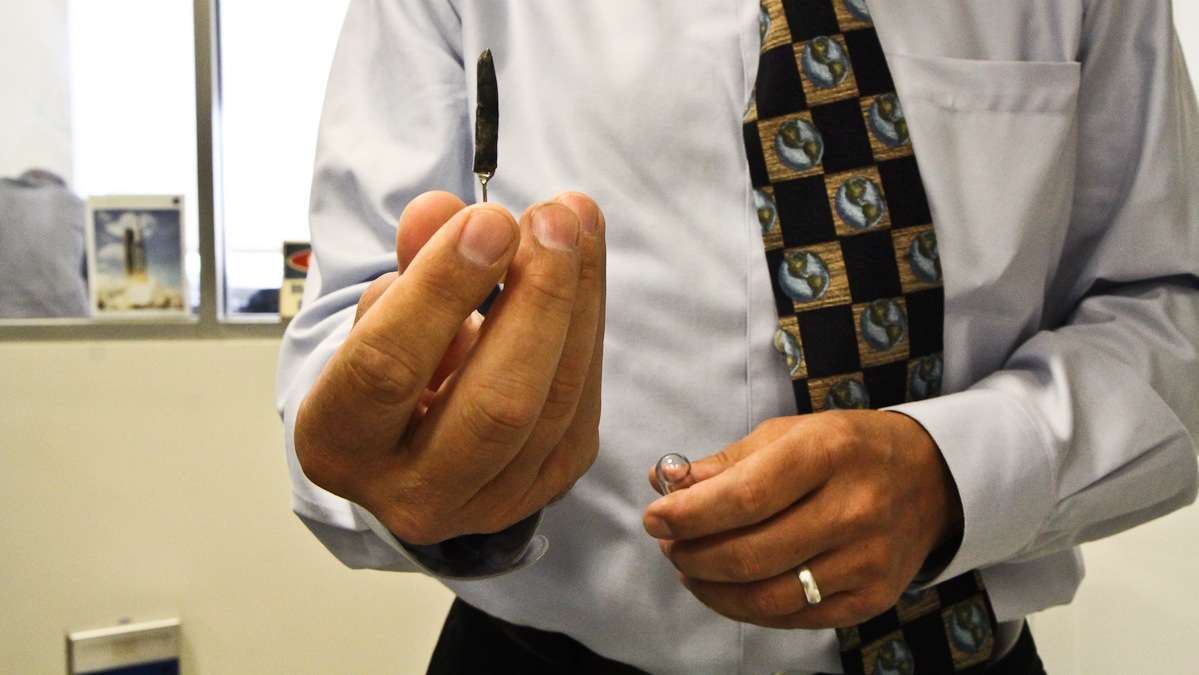
-

-

-
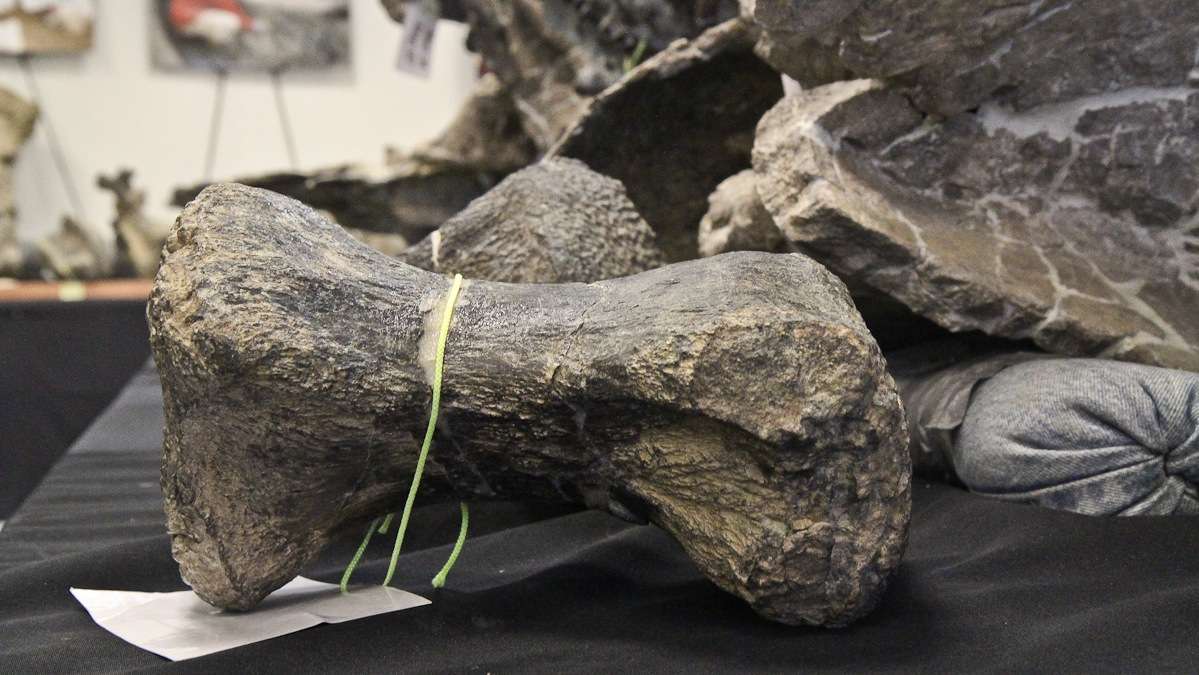
A single toe bone of Dreadnoughtus schrani weighs approximately 15 pounds. Only one was found. (Kimberly Paynter/WHYY)
-
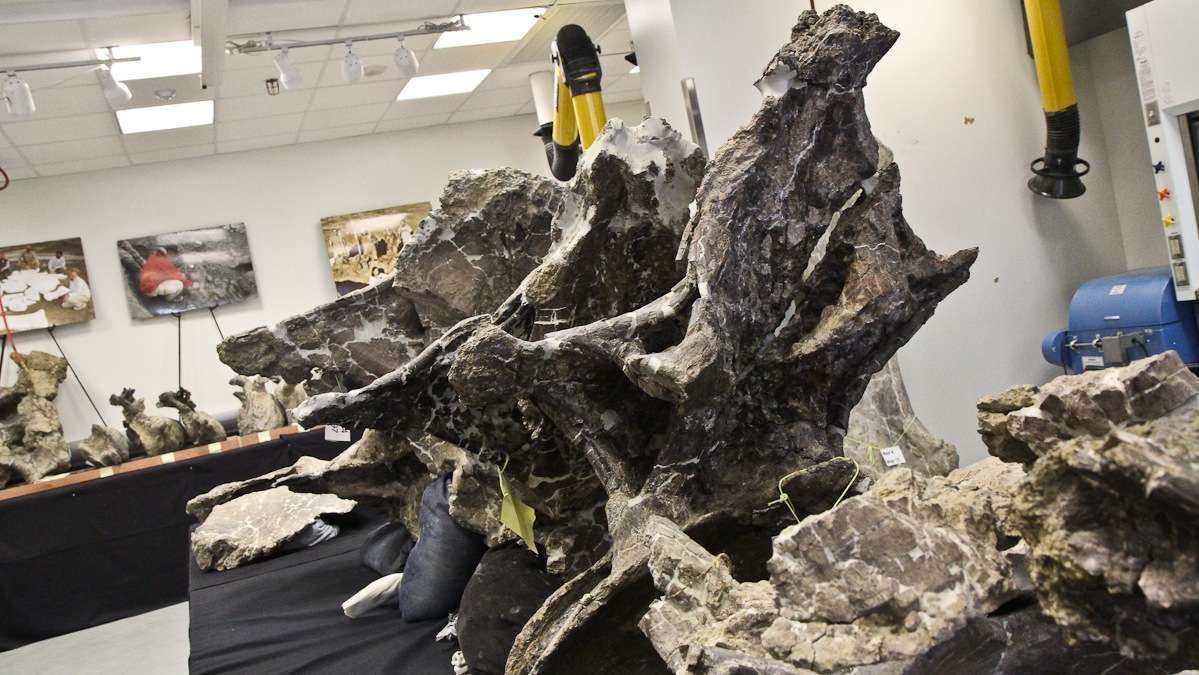
-

-

-
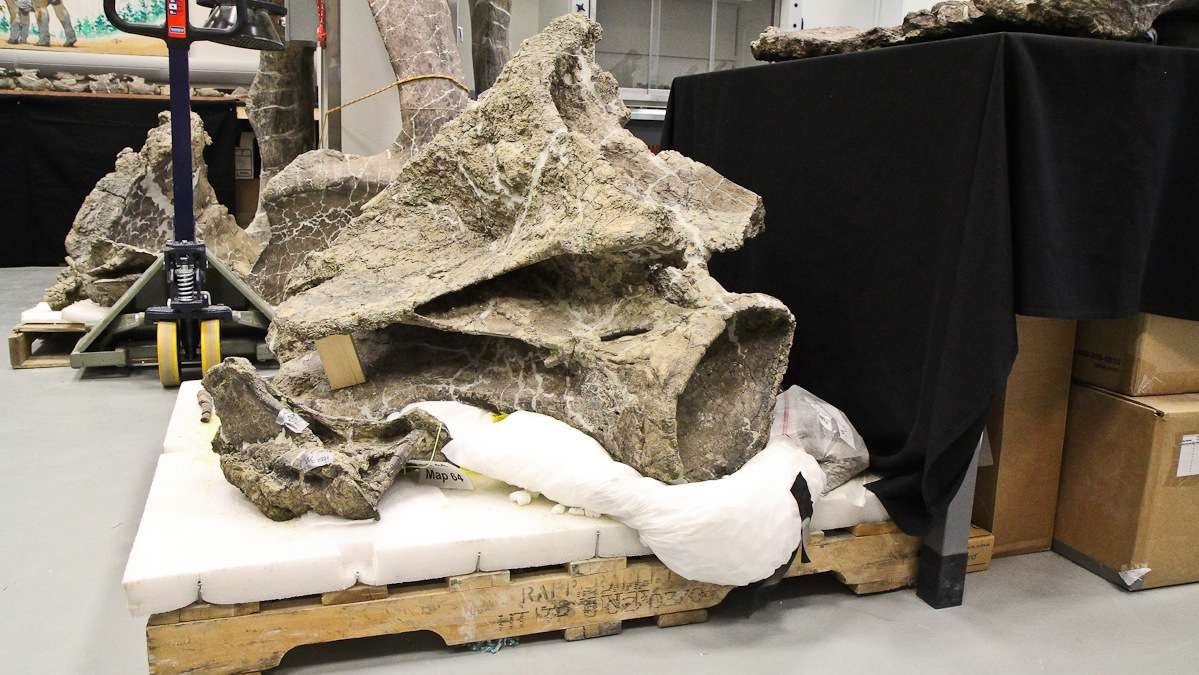
-

-

-

-

-

-

-

-
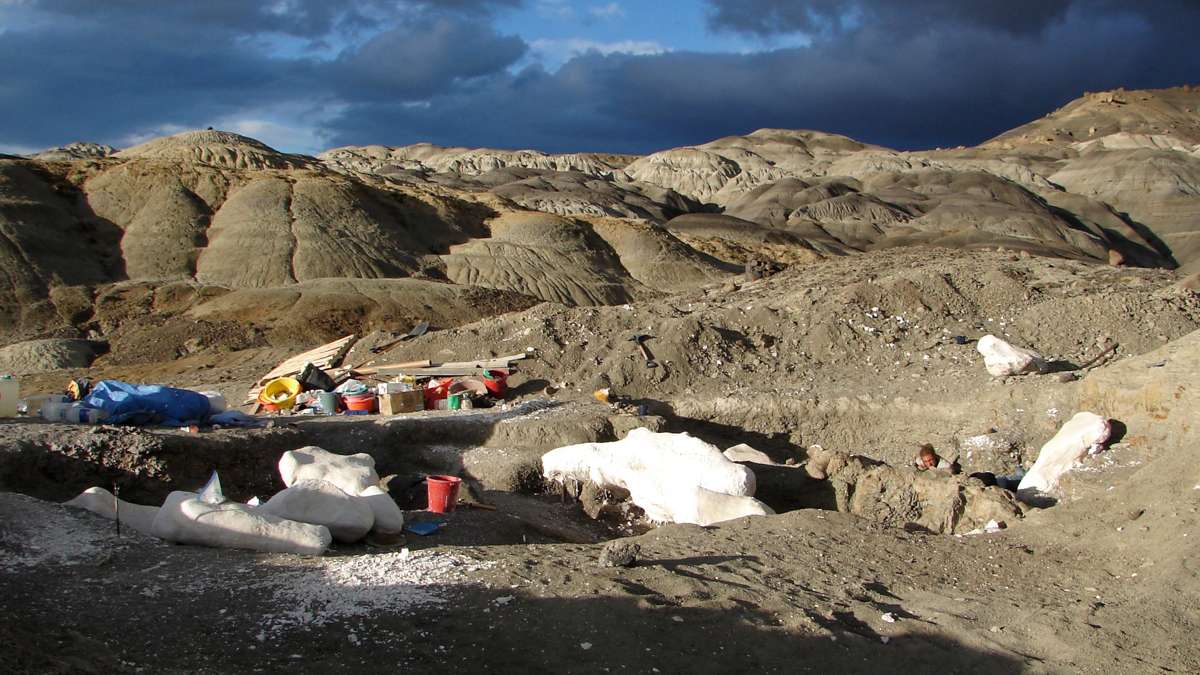
-

-

-

-

-

A Drexel-led team of scientists named a newly discovered dinosaur Thursday, a sauropod from southern Patagonia dubbed “Dreadnoughtus” for its massive size and invulnerability to attack.
The 77-million-year-old skeleton, the most complete ever found for a dinosaur of its massive size, was unearthed in Argentina over four field seasons starting in 2005.
Dreadnoughtus was a plant-eater with a long neck, a long tail, and a small head, resembling the dinosaur commonly known as Brontosaurus.
Deep muscle scarring on fossilized bones shows that the 65-ton animal was well-muscled, bulky and virtually immune to predators.
“That evokes in my mind this class of turn-of-the-last-century battleships that were called the dreadnoughts. They were made of thick steel, and very, very big and they could basically sail the seas with impunity,” said Kenneth Lacovara, Drexel University paleontology professor and lead author on the article published online today in Scientific Reports.
Lacovara decided to name the dinosaur Dreadnoughtus schrani after the battleships, “in part because I think that herbivores don’t really get their due for being ferocious.”
The creature’s estimated weight, calculated by measurements taken from the femur and humerus, lands it among the biggest dinosaurs ever discovered.
The Argentinosaurus and Futalognkosaurus, other members of the titanosaur family described by much more fragmentary remains, are estimated to weigh in excess of 70 tons using different calculation methods.
‘Weaponized’ tail
Dreadnoughtus was 85 feet long, stood two stories off the ground at its shoulders, and weighed as much as a dozen African elephants or seven or eight T. rex dinosaurs, according to Lacovara. Skeletal evidence suggests it was still growing when it died.
The animal’s fossils are still in Lacovara’s lab on the Drexel campus, covering every spare surface: Sternum and back bones are laid out at a work table in the center of the room, a six-foot femur is propped against a back wall, and the vertebra for the almost 30-foot-long tail cover a counter that bends around two walls.
Unique skeletal evidence from tail pieces show the dinosaur had unusual control of its tail.
“It could club a big predator to death with its tail, or it could flick a fly with the end of its tail,” Lacovara said.
If they got past the tail, Lacovara said, predators would have to contend with a huge claw on each of the back feet.
Unusually complete skeleton
Lacovara’s finding is scientifically significant because more than 100 bones were unearthed, in contrast to the fragmentary remains found in the discovery of other Titanosaurs, a class of large, plant-eating dinosaurs to which Dreadnoughtus belongs.
“If you can imagine a dinosaur the size of a house, it dies, it falls over on a flood plain, very little of its body is in contact with the earth, so very few of those bones have the opportunity to be buried and turned into fossils,” Lacovara said.
“Dreadnoughtus is really, especially for these super-massive dinosaurs, is in a class all its own,” said Kristi Curry Rogers, a paleontologist at Macalaster College in St. Paul, Minnesota.
“There are four or five other dinosaurs we think approach this massive body size, and none of them is known from more than just three or four bones from the whole skeleton,” Rogers said.
This specimen died in a flood and was mired in quicksand-like sediment, which preserved about 70 percent of bone types in the skeleton, excluding the skull. More fragmentary remains of a second dinosaur were uncovered from the same site in Patagonia.
Rogers says because it is so complete, Dreadnoughtus can be used as a template for other found remains, a “keystone” animal.
“They fill in the blank spaces that allow us to compare the isolated femur from Thailand with the isolated skull from Madagascar,” Rogers said.
“That allows us to make interpretations about evolution, but also about anatomy in general, how these animals looked from head to tail.”
‘Addictive thrill of discovery’
Kenneth Lacovara uncovered a tiny patch of the very first Dreadnoughtus bone at a remote field site in southern Patagonia, 100 miles off the power grid and originally reachable only by rafting down a glacial stream.
He marked the spot with his GPS, and his team returned to the site to uncover a six-foot-long femur. By the end of the first day digging, his team had uncovered 10 bones from the massive animal.
“When you find a new species, for a little bit, you are the only human who has ever known this,” Lacovara said. “This individual hasn’t seen the light of day in … 77 million years.”
Surrounded by the Andes Mountains, sitting on a barren sandstone hill, with Andean condors occasionally flying overhead, Lacovara said the moments after the discovery were magical.
“I remember sitting there that night kind of by myself, looking at this new dinosaur wondering ‘Who are you? What did you do for a living? What was it like then?'” Lacovara said. “You start to imagine its environment.”
“I think everybody that’s in field science does it for the addictive thrill of discovery.”
It took four field seasons to excavate the fossils from the southern Patagonian field site. The field team, composed of Lacovara, a team of Drexel students, the Academy of Natural Sciences’ Jason Poole, paleontologists from Argentina and the Carnegie Museum of Natural History in Pittsburgh and other collaborators, then jacketed the fossils in burlap and plastic and shipped them to labs in Philadelphia and Pittsburgh for processing.
Jason Poole, a paleo-illustrator and head of the dinosaur hall at the Academy of Natural Sciences, led the fossil prep on bones processed at the Academy after they arrived.
Poole said the skeleton has already reinforced existing theories about how huge dinosaurs moved: Mostly in first gear.
“These were really slow, plodding dinosaurs,” Poole said. “They would probably go into an area, start to eat, let their necks kind of careen around like a big vacuum cleaner and then take a couple steps to the side, and that was it. There was no running. It’s a mountain moving.”
Once protective jacketings were removed and the bones cleaned, they were all assembled in Lacovara’s lab in 2012 for study. Lacovara’s team has 3-D scanned all the bones and reconstructed a digital mount for researchers anywhere in the world to access online. Drexel engineers are also 3-D printing miniature versions of the bone to create a robotic Dreadnoughtus, to model how it walked.
After almost 10 years working on the project, Lacovara said he will be sad to put the Dreadnoughtus bones on a ship and return them next year, as stipulated by Argentinian law.
“I’ll be very forlorn when I see this thing finally steam out of Philadelphia.”
WHYY is your source for fact-based, in-depth journalism and information. As a nonprofit organization, we rely on financial support from readers like you. Please give today.



